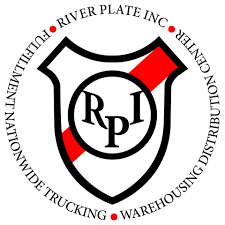To be able to stand out amongst the dozens of cosmetic brands on the shelf these days, it has become imperative for companies to remain competitive through innovative packaging. A number of new developments have been introduced into the market as a result:
- Convenience features like re-sealable packs, easy opening and stand up pouches.
- Smaller pack sizes for single serving and on the go use.
- More promotional packs and brand extensions to help maintain customer loyalty.
- More eye catching and colorful designs to enhance brand awareness.
- The development of the mass luxury category and broader product lines.
From an operational perspective, this means packaging producers have to be able to deliver new shapes, use new materials, print more colors in greater definition and deliver short run lengths economically.
In recent years, with the higher conscientiousness of preserving our earthly resources, the consumer driven trend has been to use sustainable packaging. While not the primary element of beauty and personal care (BPC), 49% of consumers feel it is important to have products made from recycled materials and 43% think it is important to recycle BPC packaging. Forward thinking beauty companies like LUSH make their products into solid form to minimize packaging and what packaging they do maintain is made from 100% post-consumer recycled materials which is clearly marked as such. Their ingredients reflects this same philosophy.
In addition, consumers have become much more aware of what they have been putting into their bodies over the past decade. This has led to increased pressure on manufacturers to be authentic and transparent in listing their ingredients on their packaging. Many newer companies have gone beyond the mandated FDA guidelines by voluntarily providing full disclosure of ingredients to meet this demand forcing more traditional brands to follow suit. More and more companies are recognizing that consumers are more educated than ever about a company’s supply chain due to the Internet and have chosen to respond by printing local food sources on their packaging to promote great sourcing, fresher ingredients and a smaller carbon footprint.
Retro packaging has become a popular trend in recent years by many cosmetic brands to create a nostalgia and appeal to younger consumers while well known designers have created limited edition packaging with quality and luxury associations. Seasonal packaging is always a big hit for the cosmetics industry with brands like Estee Lauder offering special promotional gifts complimentary or at a discount with a purchase over the holiday season. The economic downturn over the past decade has forced many manufacturers to switch to flexible packaging to help shoppers maintain their budgets. Smaller container sizes made of less expensive materials have enabled them to adjust to the economic climate without sacrificing overall market share.
Shoppers in the cosmetic category are usually concerned with the most effective results. In answer to this, it is common for many package producers to list prominent keywords such as beauty enhancing, brightening, reduced redness and toning making it easier to choose from a sea of products on the shelf. Terms like free from, natural organic ingredients, vitamin and mineral fortified, dermatologically tested, clinically tested or hypoallergenic are commonly used to make it easier for buyers to quickly identify the product that best suits their need.
Food has become a more common resource used in beauty products of late as well. Many packages boast phrases like “made with blueberry and acai” on the label addressing consumer demand for more natural skincare products. Packaging comprises 10 to 25% of the cost of advertising, promotion or display programs providing a powerful marketing tool for brands but technology,changing consumer views/behaviors, and design innovation also have enormous influence on the future of packaging. Overall, the message of relevance to consumers still remains the largest driver to the ultimate packaging decisions. Labels and packaging are becoming the norm to link younger consumers’ physical to the virtual world. QR codes have become common on packaging due to the social media explosion. Interactive packaging and implementing marketing campaigns around QR codes are among the most recent techniques introduced in product packaging according to Danielle Jerschefske in her 2012 article “Innovation, Education to move U.S. Labels Forward” in Label & Labeling.
Aside from recyclable materials, reduced packaging and other sustainability packaging techniques currently popular among cosmetic brands, degradable bioplastic made from shrimp shells is just one of the many innovative eco-friendly materials that will become commonplace in the industry within the next few years.

